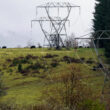Editor:
One paragraph in the article “Teachers want more prep time” (Sept. 17) piqued my interest on how history gets lost in time.
I somehow knew the “why” of teaching this keyboard class would be lost. The keyboard class the Foster teacher referred to was a piano keyboard class, not computer keyboarding.
The piano keyboard class was one I taught to every third-grade student in the district because it required the use of both left and right hand finger movements simultaneously, and for good reason. This is one task that requires the mind to perform a task using both the left and right sides of the brain in conjunction with one another. Computer keyboarding does not; it is left, right etc.
Teacher training involves educating the mind of the student and nothing on the basic structure of neurobiology. The brain and the mind are two different things. The brain is like computer hardware, and the mind is like the software that goes into the computer to give it function. If the hardware is not wired for an advanced software programs the computer either slows down trying to find the connections or doesn’t compute. This is the best analogy I have heard relating to brain/mind function.
Neural connections are made in the brain prior to birth. They regulate breathing, heartbeat, body temperature and produce reflexes. After birth trillions of more connections are made with the brain wiring itself between neurons with axons via electrical and chemical exchanges.
The corpus callosum is a band of transverse nerve fibers between hemispheres (left/right) of the brain. If neural connections are made prior to ages 8 to 10 years, depending on function, they remain connected for life. If not the brain prunes to get rid of unneeded connections. A two year old child has twice the density of connections as an adult.
Learning is not impossible after the pruning, but it is much slower if early connections have not been made. Reference the work of Dr. Carla Shatz, Head Dept. of Neurobiology, Harvard Univ.
Piano keyboarding makes the connections that are required for spatial-temporal reasoning if accomplished in early childhood. This reasoning is used for abstract thought.
This is one reason I pushed for this course offering for our students in Sweet Home. This course provides a win-win-win situation. Students receive: (1) music education, (2) spatial-temporal reasoning neural connections, and (3) teacher release time.
Ken Collins
Sweet Home




